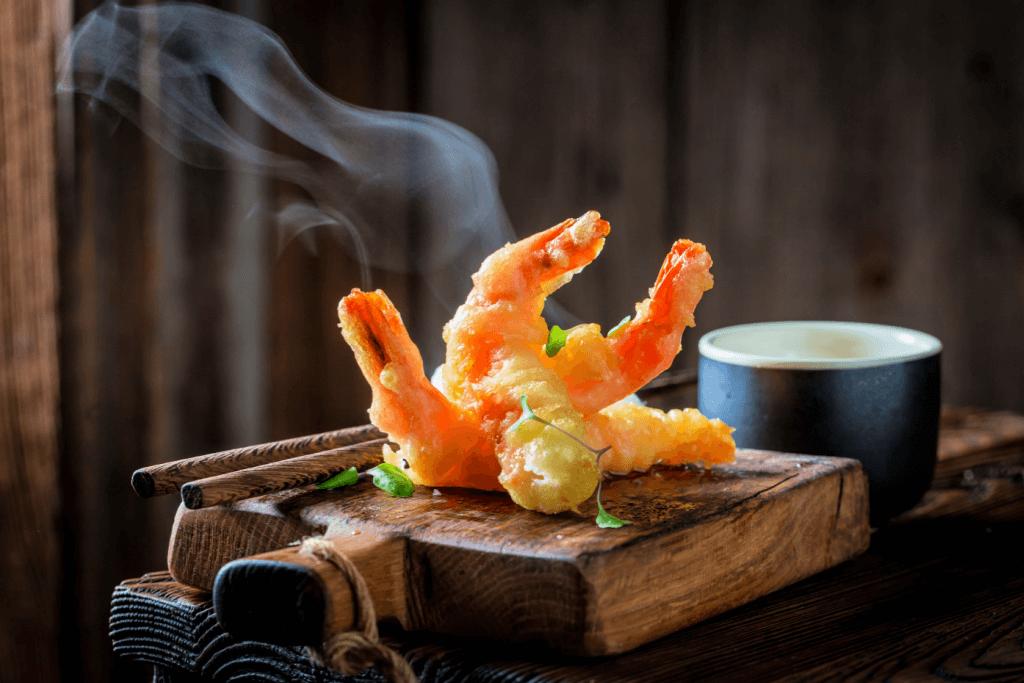People prepare tempura by lightly battering seafood or vegetables in flour and then deep frying them in oil and fat. Typically, the batter consists of flour, egg, and water. However, different regions have their ways of making the batter.
The oil used in frying the tempura significantly affects the final dish. Vegetable oils tend to give it a blonde color. In comparison, sesame oils give the dish more of a golden color. Afterward, it comes with salt, wasabi, and a dipping sauce. Some restaurants may also serve fried shrimp with matcha (green tea) powder.
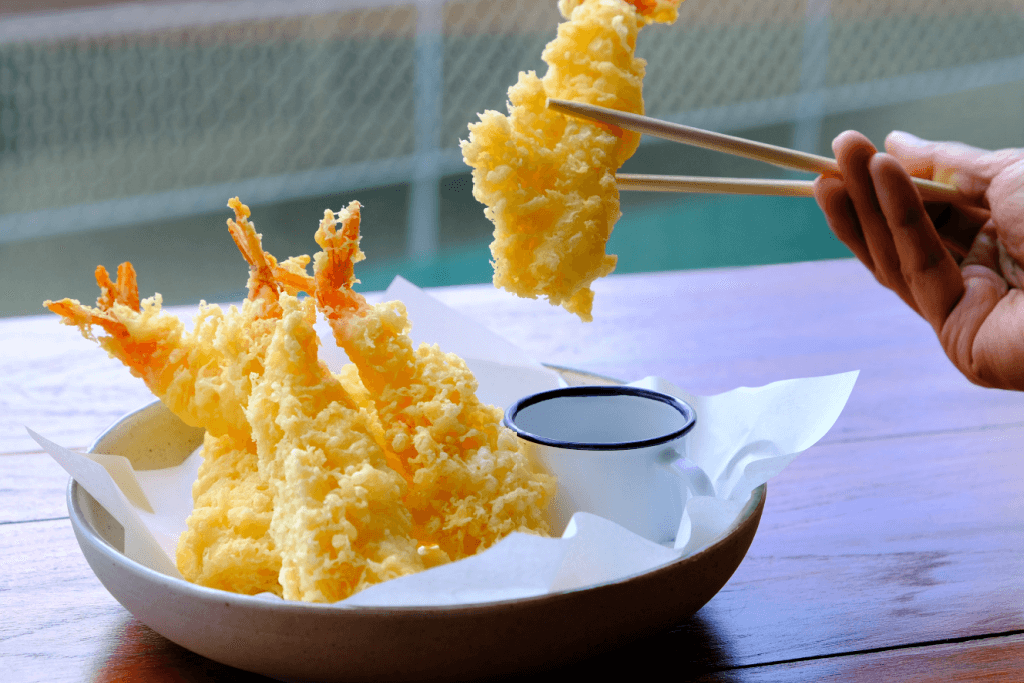
People typically make the dipping sauce using soy sauce, occasionally adding a hint of citrus flavor. Restaurants may refer to the citrus-tasting soy sauce as the “oroshi” style on their menus. The dipping sauces play a role in enhancing its flavor. It can be a standalone dish or served atop sushi, rice bowl, and noodle dishes.
Table of Contents
ToggleHistory of Tempura
Historical records trace the origins of tempura back to the 1660s when Portuguese Catholic missionaries arrived and introduced the cooking technique of coating foods with flour and frying them. This cooking method was standard during Lent, as several Christian denominations forbade meat consumption. The term “tempura” comes from the Latin phrase “ad tempora cuaresme,” which translates to “in the time of Lent.”
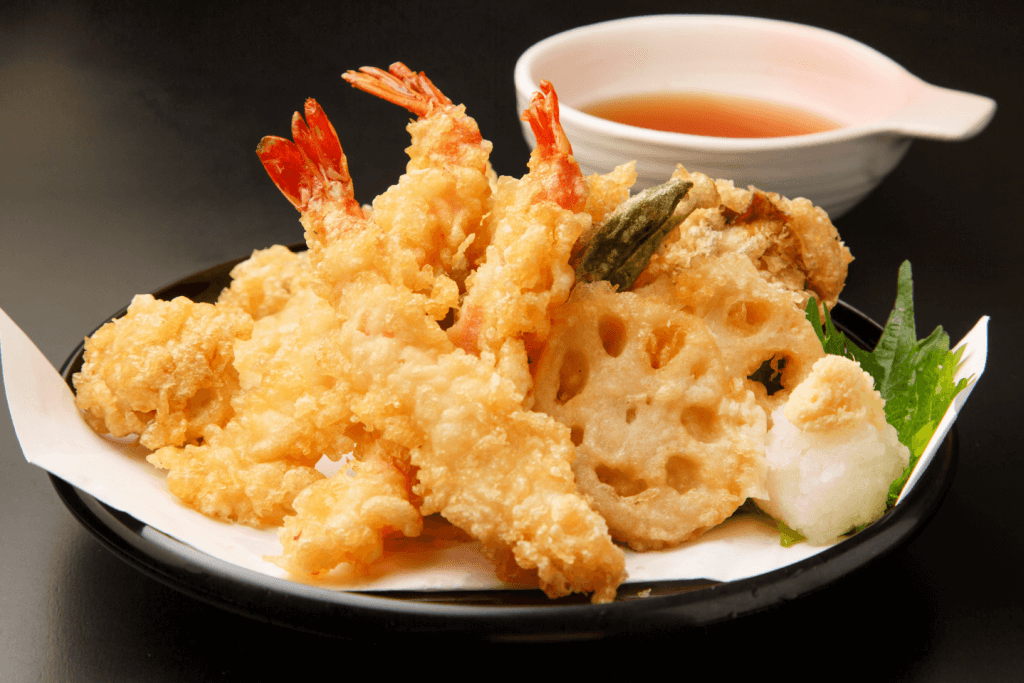
The delicacy was first introduced around the commercial port city of Nagasaki. When the missionaries arrived, Japan had restricted access to only a few ports, including those used by Portugal, The Netherlands, and China. The fried dishes introduced during this time differed slightly from the modern version. As a result, two significant styles emerged: Nagasaki and Kamigata.
In Nagasaki, they made Nagasaki tempura by mixing sugar with flour and then combining the batter with sake before frying it in lard. This style is still prevalent in Nagasaki today. In the past, oil was scarce in Japan, so it was considered a luxury food. However, as its popularity grew, oil production in Japan increased. Different regions in Japan developed their way of making it, with the Kamigata style originating in western Japan.

In Kamigata-style tempura, they prepared it differently compared to East Japan. In Osaka and Kyoto, they deep-fried the batter using sesame oil. Furthermore, due to the strong Buddhist influence in the region, they exclusively made the dish using vegetables. In East Japan, however, it was more common to use fish. As the early Edo period unfolded, it continued to gain popularity and became accessible at street stalls.
Are you interested in trying even more historical Japanese food? Try Sakuraco! Sakuraco delivers traditional Japanese snacks, sweets, tableware, and more from local Japanese makers right to your door, perfect for a pleasant snack time at home!
When did the word “tempura” first appear in Japanese literature?
During the Edo period, Japanese literature introduced the term “tempura,” and authors recorded the first official recipe. In 1764, Kokubyaku Seimishu, a cooking book from that era, published the recipe. The recipe instructs cooks to coat a seabream filet with udon flour batter and fry it in oil. It forms the basis of today’s cuisine.
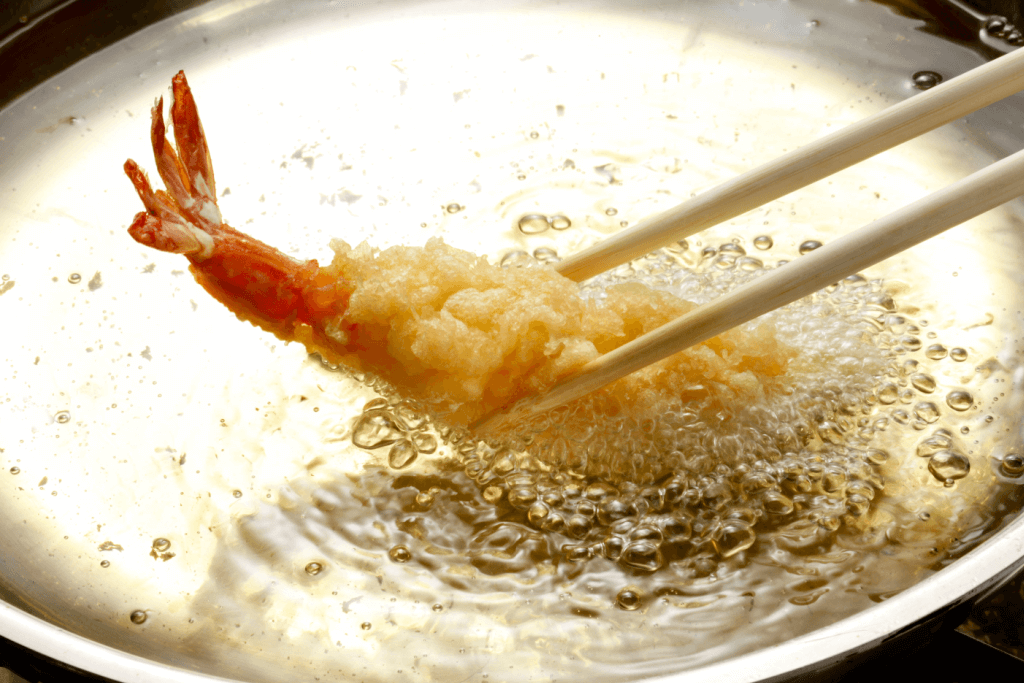
During the Edo period, the dish was famous in Kanto and Kansai. However, it experienced a second wave of popularity following the Great Kanto Earthquake in 1923. Artisans who had lost their jobs due to the earthquake relocated to different regions of Japan, reintroducing tempura. Laborers considered tempura a nutritious food choice due to its high-calorie content.
However, the effects of the Pacific War caused tempura to once again be considered a luxury food due to the shortages of fats and oils. As a result, it could only be consumed during special occasions or by the wealthy. After the war, the Japanese economy recovered, and new cooking techniques were introduced.
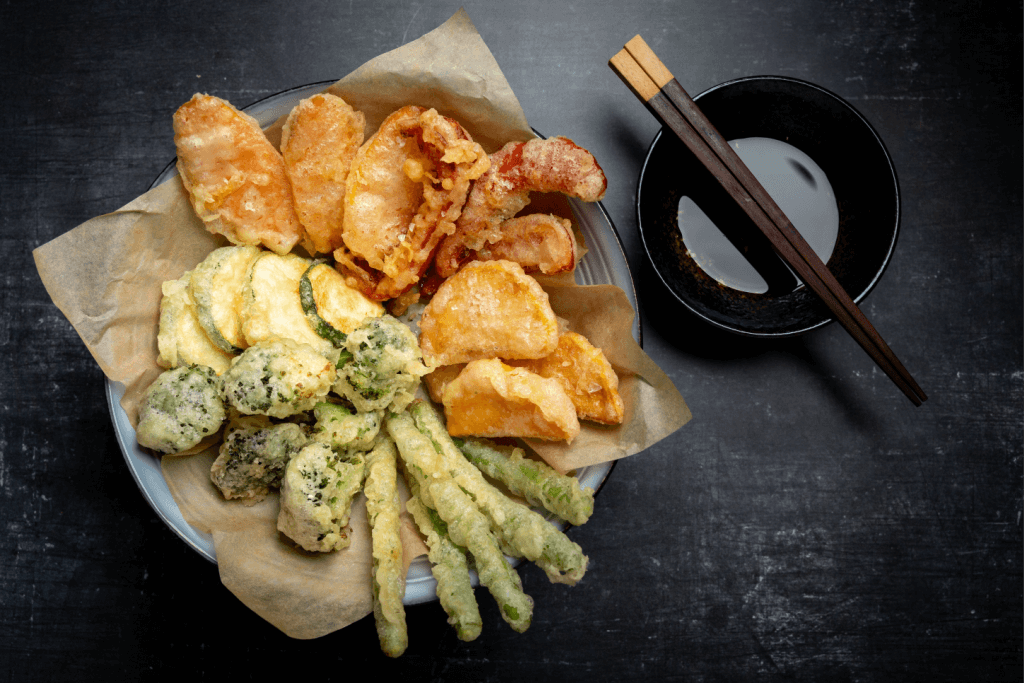
In particular, the popularity of using seasonal vegetables and fish for making tempura increased. The consumption of oil and fat among the Japanese rapidly increased as the production of edible oils expanded. This increase made it easier for people to prepare tempura dishes at home, especially with the introduction of deep fryers and tempura flour sets in the late 1990s.
What are the different types of tempura?
Tempura offers a versatile canvas for various food items. It accommodates a wide range of ingredients, making it suitable for creating delectable dishes. Among the popular choices for tempura are shrimp, pumpkin, and egg, each delivering its unique flavors and textures.
Shrimp
Shrimp tempura, or ebi tempura, is Japan’s most well-known delicacy. Supermarkets and convenience stores offer it, and it’s a common topping for udon and soba noodles. In upscale restaurants, they even include the shrimp’s head, symbolizing the shrimp’s high quality.
Pumpkin
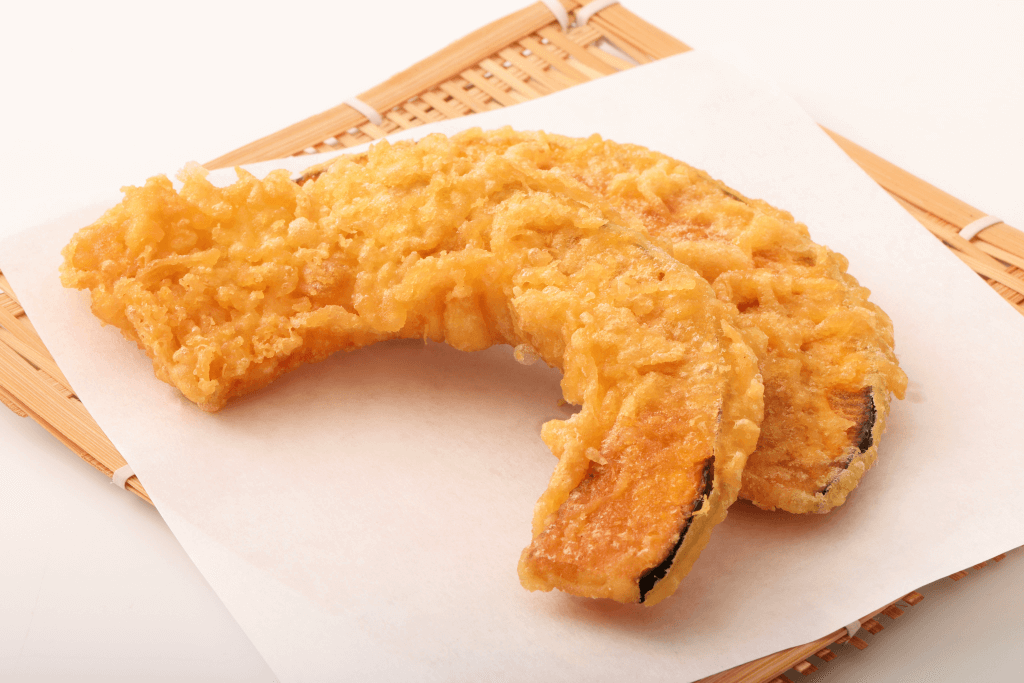
In Japan, pumpkin tempura, known as kabocha tempura, frequently graces the tables as a delightful side dish. The cooking technique transforms the pumpkin into a crispy delight, retaining its sweetness. Sushi trains and noodle restaurants often offer this savory treat to their patrons.
Egg
Tamago or egg tempura tantalizes taste buds with deep-fried soft-boiled eggs. This cooking method preserves the eggs’ creamy interior while creating a crispy outer layer. Izakayas and sandwich shops commonly feature eggs as a delectable offering.
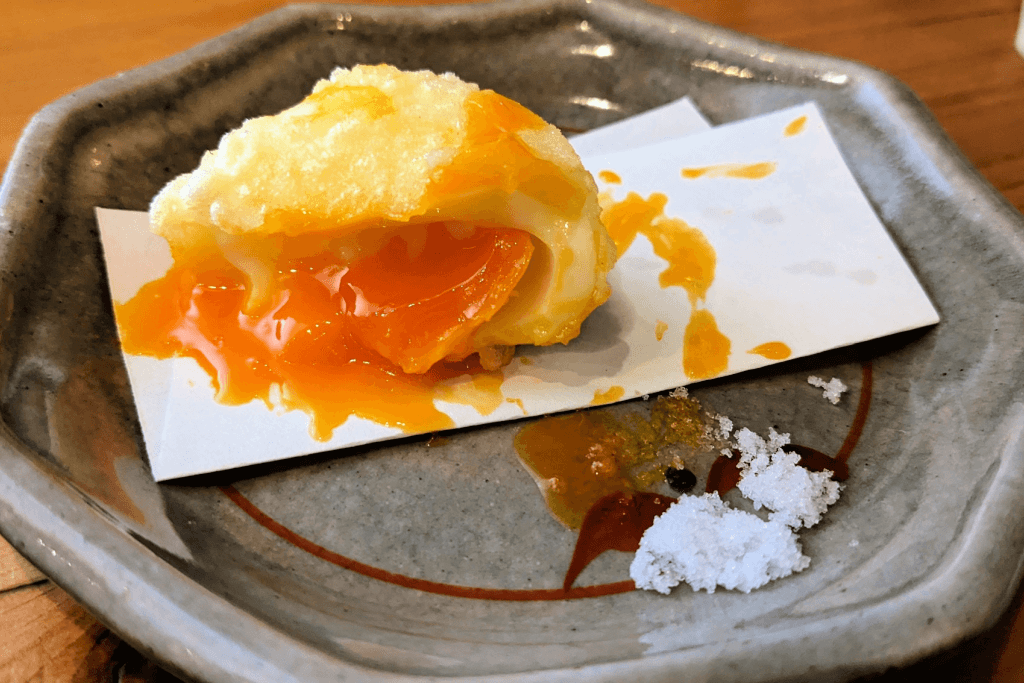
If you love fried food, tempura is worth trying in Japan. Not only is it healthy – but it also provides a new way to enjoy different foods you already love! What type do you want to try? Let us know in the comments below!


